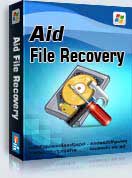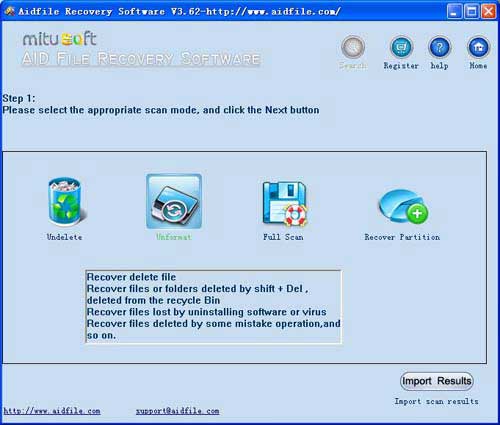Unformat Xbox 360 hard drive, Unformat hard drive Xbox 360 with Aidfile data recovery software.
It means recover data after format Xbox 360 hard disk drive.
1:
Use "Unformat" mode to recover lost files, unformat hard drive Xbox 360 quickly."Unformat" support Exfat,Fat32, NTFS.
2:
Change partition location or size for the format operation, the user can select the "full scan" or "fast recover partition " two functions, please refer to the following details about the "full scan" and "recover partition" introduced.
Use "Recover partition" mode to recover files if Xbox 360 hard disk drive partitions changed or damaged or deleted.
3:
Use "Full Scan" to restore lost files if Xbox 360 hard drive show as "raw" or recover files which can not be found with "unformat",retrieve files from raw partition,recover files of drive which are not NTFS,nor exfat,nor fat32.
"Full Scan" support deep and full scan lost data from partition.
As a user,whatever we tell you,whatever you want,just try it. If Aidfile can help you,we congratulate ,if not,just contact us.
After you format your hard disk drive, accidentally, will be missing many important files,for example:Word documents,pdf files,excel sheets,photos,videos, letters, statements, etc, If a drive is formatted, you can select the "Unformat" to scan. Also you could select "Full Scan" to find lost files by file type.or,you can select "Recover paritition" to scan if the partition size or partition position has changed by formatted hard disk drive.
Hard drive for the Xbox 360 Slim console provides an all-purpose storage solution for media lovers and gamers alike. The drive can be used to save your level in a game, as well as to store media such as Xbox games, music, movies, photos, community-created content from Xbox Live Marketplace, and more! The modular design allows you to easily transport media between Xbox 360 consoles. This is a generic product, but the quality is on-par with its name-brand counterpart.
Aidfile have a free edition for you recovering 1G files with no pay.Just free download and try it.
Formatting a disk for use by an operating system and its applications typically involves three different processes.High-level formatting is the process of setting up an empty file system on a disk partition or logical volume and, for PCs, installing a boot sector. This is a fast operation, and is sometimes referred to as quick formatting. Reformatting often carries the implication that the operating system and all other software will be reinstalled after the format is complete. Rather than fixing an installation suffering from malfunction or security compromise, it may be necessary to simply reformat everything and start from scratch. Various colloquialisms exist for this process, such as "wipe and reload", "nuke and pave", "reimage", etc. Sometimes, data present in the physical drives (Internal/External Hard disk, Pen Drive, etc.) gets lost, deleted and formatted due to circumstances like virus attack, accidental deletion or accidental use of SHIFT+DELETE. In these cases, data recovery software are used to recover/restore the data files. Logical recovery of files, partition, MBR and filesystem structures After the drive has been cloned to a new drive, it is suitable to attempt the retrieval of lost data. If the drive has failed logically, there are a number of reasons for that.Data damage can be caused when, for example, a file is written to a sector on the drive that has been damaged. This is the most common cause in a failing drive, meaning that data needs to be reconstructed to become readable. Corrupted documents can be recovered by several software methods or by manually reconstructing the document using a hex editor.
Aidfile Recovery Software Keyfeature
support FAT32 EXFAT and NTFS file system
Windows 10,Windows XP, Windows 7, Windows 8,Windows 8.1, Windows Vista, Windows 2003, 2008, 2012.
Support WD, Samsung, Sandisk, Toshiba, Seagate, HP, Lenovo,Maxtor,etc.
MS Office document (Word, Excel, PowerPoint, Outlook) types (doc, docx, ppt, pptx, xls, xlsx, pst, etc.),photos (JPG, PNG, ICON, TIF, BMP, RAF, CR2, etc.), videos and audios (MPG, MP4, MP3, MTS, M2TS, 3GP, AVI, MOV, RM, RMVB, etc.), compressed files (rar, zip, etc.), PE files (exe, dll, lib, etc.) and so on.

